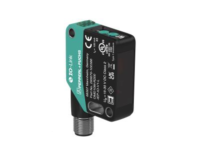
Technology can have its bugs from time to time, and the technology aboard the International Space Station is no different. In fact, it would seem that sensors made for the sole purpose of recording radiation levels there, while British astronaut Tim Peake spent six months in space, were acting a little screwy and no one really noticed for the longest time.
For something that seems so important, you would think NASA’s stop scientists would be actively monitoring and looking into this sort of thing, but it turns out that it took the mind of a high school student from the UK to point out the issue and make NASA aware of it.
The inconsistency was found as a result of the TimPix project from the Institute for Research in Schools (IRIS). This initiative enabled UK students to go hands-on with data from the International Space Station, while the hope was that perhaps a bright student would be able to point out anything that looked strange that may have been overlooked by professionals.
And that they did…
According to 17-year-old student Miles Soloman these radiation detectors were recording inconsistent data. He had noticed that, in some cases, they were picking up negative amounts of energy, which doesn’t make any sense because you either have energy spikes or you don’t, which means you would see positive numbers or zeroes.
According to Soloman, one of the first things he looked for when the data was plopped in front of his face was the lowest numbers on the list, and that’s when he made the discovery.
Even NASA wasn’t noticing these spikes; they claim that they were aware of the problem happening very rarely, but not in the magnitude that it had actually been occurring, which was multiple times every day. In other words, Soloman actually pointed out a very important inconsistency that NASA professionals had overlooked.
It turned out that the error came from a glitch in the algorithm that came up with the readings, and negative numbers would appear any time it was supposed to say 0 for ‘no energy.’ Without a doubt, it would seem that the IRIS program is a valuable resource for NASA, and it’s already paying off.
“This underscores – I think – one of the values of the IRIS projects in all fields with big data. I’m sure there are interesting things the students can find that professionals don’t have time to do,” said Professor Larry Pinksy, from the University of Houston.
Soloman points out that he wishes to learn more about NASA and what they do.
Without a doubt, the IRIS program gives students a real opportunity to look at real data and inspire them to potentially choose space science as a line of work when they grow to be older.
Source: ScienceAlert


















